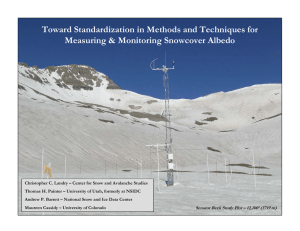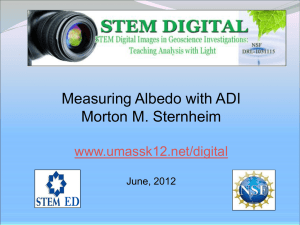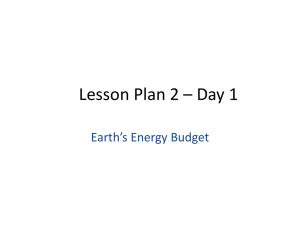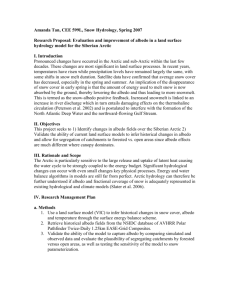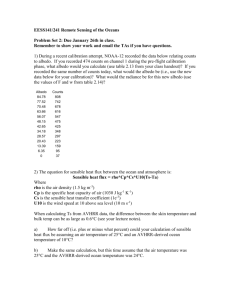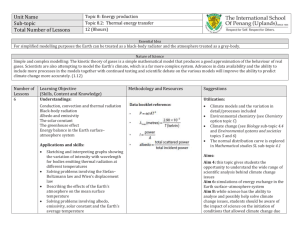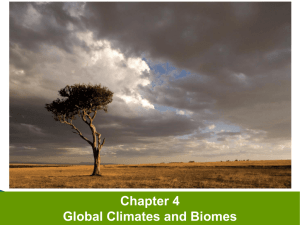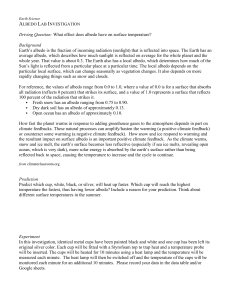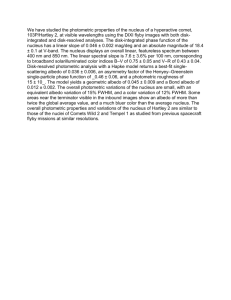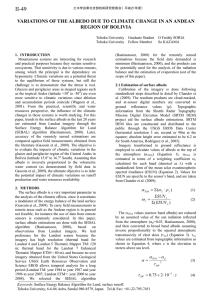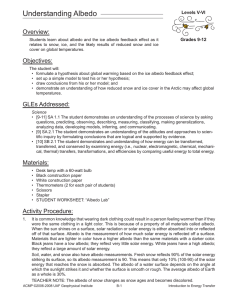Major Concepts in Climate Change
advertisement
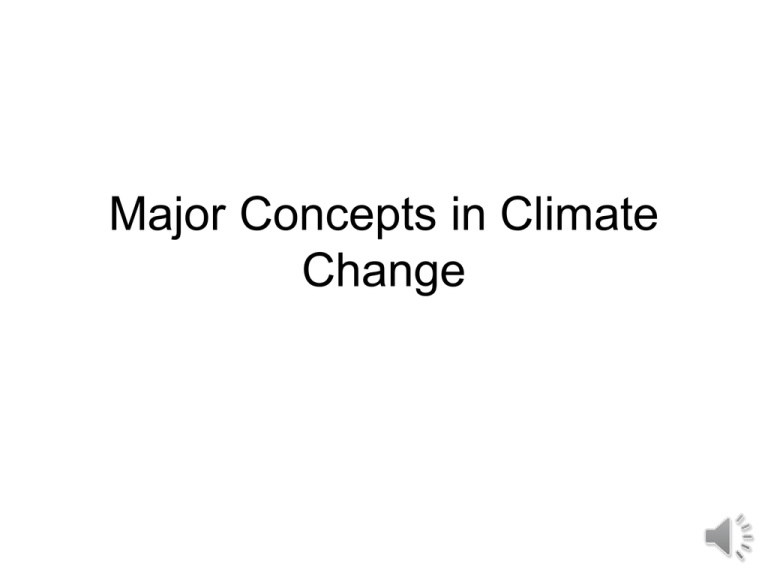
Major Concepts in Climate Change Learner Outcomes: At the end of this lecture you will be able to • Describe major concepts related to climate change and global warming. • Define density, gradient, albedo, and convection. • Describe the difference between linear and nonlinear. Density • Density = MASS (grams) VOLUME (cubic centimeters) • Often expressed as g/cm3 • Usually as temperature increases, volume increases • As pressure increase, volume decreases • Density is affected by temperature and pressure What is convection? • Convection is a physical process cause by temperature and density gradients • Hotter (less dense) material rises. • As it rises it cools (becomes more dense) and sinks Gradient • Slope or difference • Moves energy • Greater slope, faster velocity, flux or movement • Energy moves from high energy state to low energy – Temperature moves from high to low – Salinity moves from high to low How does energy travel? • Form of a wave • Wavelength (frequency) • Electromagnetic spectrum Electromagnetic Spectrum What is the electromagnetric spectrum? • The wavelengths of light span an enormous range – from fractions of a millimeter (for X-rays) to kilometers (for radiowaves). • Light waves travel at the speed of 300,000 km/sec. • Visible light has wavelengths between 400 and 700 nanometers. • The shorter wavelengths of ultraviolet (UV) light can cause mutations and sunburns, but are generally filtered out by the ozone layer. Linear vs. Nonlinear Y X Linear Nonlinear Linear vs. Nonlinear • Linear -Fixed change in Y with change in X • Nonlinear (i.e. exponential)-change in Y increases at constant percentage • Exponential example: population – Number of people added to population is not constant, percentage of people added is constant “Sinks” • A natural or artificial means of absorbing or removing a substance or a form of energy from a system. • Reservoir for storing or accumulating energy • Heat Sink • Carbon Sink Albedo: Reflectivity • Albedo is the degree to which object reflects light (energy) – Color (and temperature) – Surface texture – Dependent upon Angle • Higher albedo surface will reflect more energy • Lower albedo surface will absorb more energy Albedo: Solar Zenith Angle • Determined by the latitude, time of year, and time of day. • i.e. In the Northern Hemisphere, the sun shines directly overhead at noon at the Tropic of Cancer on the first day of summer Albedo:Solar Zenith Angle Albedo of Different surfaces Surface Soil Details Albedo Dark vs. Light (wet to dry) 0.05-0.40 Grass Crops Forests Long vs. Short Deciduous Coniferous 0.16-0.26 0.18-0.25 0.15-0.20 0.05-0.15 Albedo of Different Objects Surface Water Snow Ice Clouds Details Small zenith Angle Large Zenith Angle Old-Fresh Sea Glacier Albedo 0.03-0.10 0.1-1.0 0.40-0.95 0.3-0.45 0.20-0.40 Thick Thin 0.60-0.90 0.30-0.50 Feedback • Positive-enhances effect • Negative-decreases effect Positive Feedback • Snow and Keeping the Earth Cool – Albedo of snow: high reflectivity – High reflectivity, less energy – Less energy, less heat – Earth stays cool/cold Feedback Mechanisms • Feedback mechanism - when physical processes in the earth-atmosphere system further impact the initial change • if the impact is such that the initial perturbation is enhanced, then it is called a positive feedback mechanism --> • if the impact is such that the initial perturbation is reduced, or weakened, then it is called a negative feedback mechanism. QOD The albedo of snow would provide A) A positive feedback to global warming B) A negative feedback to global warming C) Increased reflectivity D) B and C
